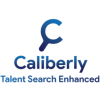- البحث عن وظائف
- Dubai, Dubai
- Senior Business Analyst
عرض العمل هذا غير متوفر في بلدك.

Senior Business Analyst
CaliberlyDubai, United Arab Emiratesمنذ أكثر من 30 يومًا
نوع الوظيفة
- Quick Apply
الوصف الوظيفي
Key Responsibilities :
- Requirement Gathering & Analysis : Collaborate with stakeholders (business units, product owners, end-users) to elicit, analyze, and prioritize business requirements, translating them into clear, actionable specifications.
- Documentation Excellence : Create and maintain high-quality documentation, including :
- Agile user stories with clear acceptance criteria.
- Functional Specifications Document (FSD), Business Requirements Document (BRD), and Scope Statements.
- Process flows, use case diagrams, and data flow diagrams to visualize requirements.
- Project scope documents to ensure alignment and manage scope creep.
- Process Design & Optimization : Map and document current (as-is) and future (to-be) business processes, identifying inefficiencies and recommending streamlined workflows.
- Mockups & Prototyping : Design wireframes, mockups, and interactive prototypes (using tools like Figma) to visualize user interfaces and validate requirements with stakeholders.
- Research & Analysis : Conduct thorough market, competitor, and user research to inform product strategy, validate requirements, and identify opportunities for innovation.
- Stakeholder Facilitation : Lead workshops, interviews, and JAD (Joint Application Design) sessions to align stakeholders, resolve conflicts, and drive consensus on requirements and priorities.
- Go-To Resource : Act as the primary point of contact for clarifying requirements, resolving ambiguities, and providing insights to development teams, QA, and leadership.
- Agile & Best Practices : Champion Agile methodologies (Scrum / Kanban), ensuring user stories are well-defined, prioritized, and refined in backlog grooming sessions. Implement BA best practices (e.g., BABOK guidelines) to ensure consistency and quality.
- Change Management : Manage requirement changes through structured processes, assessing impacts on scope, timeline, and resources, and communicating updates effectively.
- Testing & Validation : Collaborate with QA teams to develop test cases, ensure requirements traceability, and validate that deliverables meet business needs through UAT (User Acceptance Testing).
- Metrics & Reporting : Define KPIs and success criteria for projects, track progress, and provide actionable reports to stakeholders to support decision-making.
- Continuous Improvement : Proactively identify opportunities to enhance BA processes, tools, and templates, fostering a culture of excellence and innovation.
إنشاء تنبيه وظيفي لهذا البحث
Senior Analyst • Dubai, United Arab Emirates